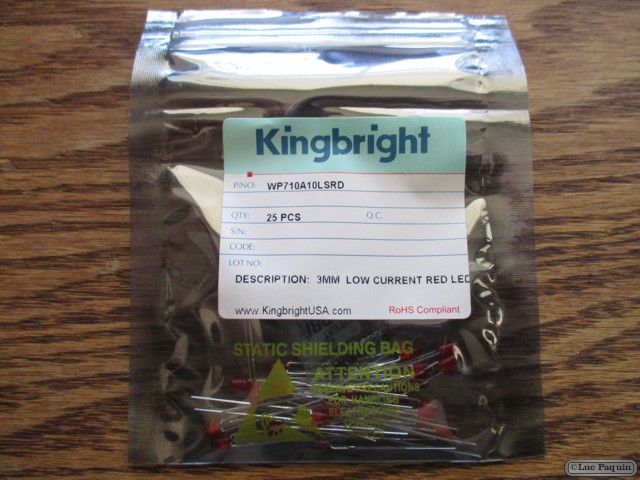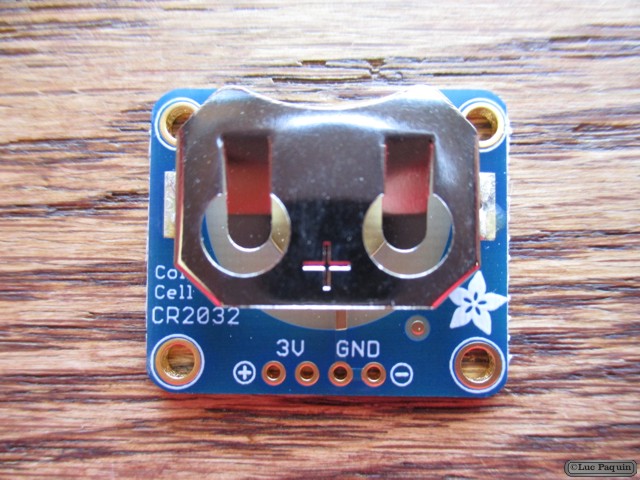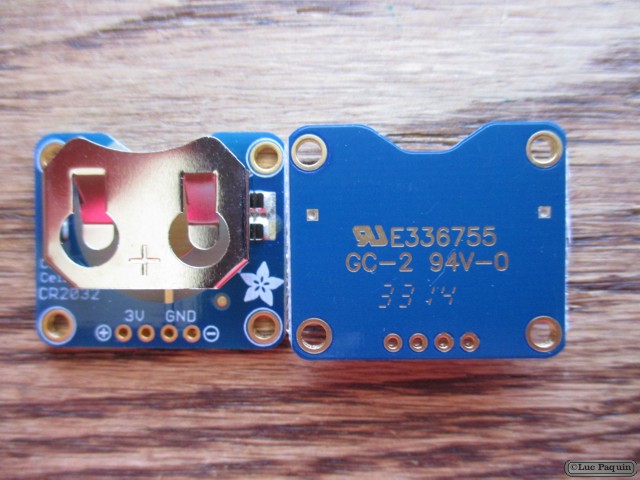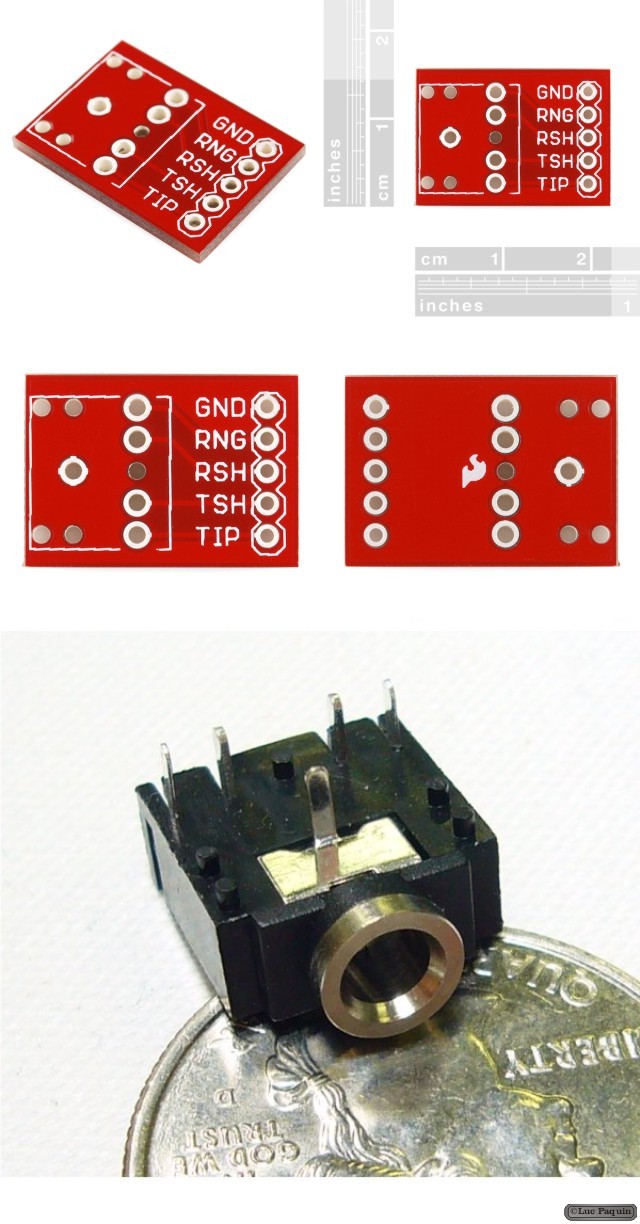Microcontrollers
Microcontrollers
Adafruit – Potentiometer Knob – Soft Touch T18 – White
Adafruit: 2047
Description
Oh say can you see
By the knob’s early light…
Sorry – we thought that was clever. And while it wasn’t really, this potentiometer knob definitely is. It’s a ‘soft touch’ T18 knob that works great with our Panel Mount 10K, Panel Mount 1K, and Panel Mount 100K potentiometers. The knob is designed to set directly on the potentiometer’s ridges so it’s an easy & secure fit. It has a nice feel, with a rubbery grip, tweaking it is quite fulfilling.
This is the blue version and it has a nice deep color on the inside with a striking blue line on the outside for great visibility with whatever you’re making. We also carry it in white and red if you’re looking for a variety of colors.
Technical Details
- Diameter of the top: 11mm / 0.4″
- Diameter of the base: 15mm / 0.6″
- Weight: 1g
- Colour: White
Don Luc
Kingbright – 3mm Low Current Red LED
Kingbright: WP710A10LSRD
3mm Low Current Red Led
- Emitting Color: Red
- Material: GaAlAs
- Color/Wavelenght: 640nm
- Lens Type: Color Diffused
Product Featured
- Low power consumption
- Popular T-1 diameter package
- Viewing angle – 34°
- Available on tape and reel
- RoHS compliant
Applications
- Traffic signage
- Signage application
- Decorative & entertainment lighting
- Commercial & Residential architectural lighting
Don Luc
SparkFun – Standoff – Nylon (4-40; 3/8″)
Kingbright – 3mm Low Current Yellow LED
Kingbright: WP710A10LYD
3mm Low Current Yellow Led
- Emitting Color: Yellow
- Material: GaAsP/GaP
- Color/Wavelenght: 588nm
- Lens Type: Color Diffused
Product Featured
- Low power consumption
- Popular T-1 diameter package
- Viewing angle – 34°
- Available on tape and reel
- RoHS compliant
Applications
- Traffic signage
- Signage application
- Decorative & entertainment lighting
- Commercial & Residential architectural lighting
Don Luc
Adafruit – Potentiometer Knob – Soft Touch T18 – Red
Adafruit: 2046
Description
Oh say can you see
By the knob’s early light…
Sorry – we thought that was clever. And while it wasn’t really, this potentiometer knob definitely is. It’s a ‘soft touch’ T18 knob that works great with our Panel Mount 10K, Panel Mount 1K, and Panel Mount 100K potentiometers. The knob is designed to set directly on the potentiometer’s ridges so it’s an easy & secure fit. It has a nice feel, with a rubbery grip, tweaking it is quite fulfilling.
This is the blue version and it has a nice deep color on the inside with a striking blue line on the outside for great visibility with whatever you’re making. We also carry it in white and red if you’re looking for a variety of colors.
Technical Details
- Diameter of the top: 11mm / 0.4″
- Diameter of the base: 15mm / 0.6″
- Weight: 1g
- Colour: Red
Don Luc
Adafruit – USB DIY Connector Shell – Type Mini-B Plug
Adafruit: 1389
Description
Make your own USB connections without slicing apart a USB cable and soldering those thin wires inside. These DIY “USB shells” are available in USB A plug, micro B, mini B and USB A socket.
Each shell comes with a two-part snap plastic shell and a proper connector with easy-to-solder tabs.
Don Luc
Adafruit – Standard LCD 20×4 + Extras – White on Blue
Adafruit: 198
Description
Standard HD44780 LCDs are useful for creating standalone projects.
- 20 characters wide, 4 rows
- White text on blue background
- Connection port is 0.1″ pitch, single row for easy breadboarding and wiring
- Single LED backlight with a resistor included, you can power it directly from 5V. If it’s too bright for you, it can be dimmed easily with a resistor or PWM and uses much less power than LCD with EL (electroluminescent) backlights
- Can be fully controlled with only 6 digital lines!
- Built in character set supports English/Japanese text, see the HD44780 datasheet for the full character set
- Up to 8 extra characters can be created for custom glyphs or ‘foreign’ language support (like special accents)
- Comes with necessary contrast potentiometer and strip of header
For more information, check out our detailed step-by-step Arduino+LCD tutorial
We have a generic 20×4 datasheet that has dimensions and pin-locations (the exact model may vary but the pinout, size and protocol information is the same). We also have a HD44780 datasheet with the detailed commands for control.
Don Luc
SparkFun – Standoff – Metal (4-40; 3/8″; 10 pack)
Adafruit – 20mm Coin Cell Breakout Board (CR2032)
Adafruit: 1870
Description
Simple but effective – this breakout board has a CR2032 coin cell battery holder soldered on and 0.1″ pitch breakout pins for easy connecting. Great for powering very low-current projects, or adding a battery backup circuit to a real-time-clock or similar.
Comes with one fully assembled and tested coin cell battery holder and a small stick of 0.1″ header so you can solder it on and plug into a breadboard. Coin cell battery is not included.
Technical Details
Dimensions:
- 23.5mm x 28mm x 1.6mm / 0.9″ x 1.1″ x 0.06″
- Mounting hole distance: 18mm x 22mm / 0.7″ x 0.9″
- Weight: 3g
Don Luc
SparkFun – Audio Jack Breakout – Audio Jack 3.5mm
SparkFun: PRT-10588
Description: Simple breakout board for the 3.5mm audio jack. Use this breakout (shipped bare) to allow breadboard or SIP access to the super-common 3.5mm audio jack. All five pins are broken out.
Note: You get the bare PCB only, check below for the Audio Jack.
SparkFun: PRT-08032
Description: Low profile 3.5mm stereo audio jack.
Don Luc






































